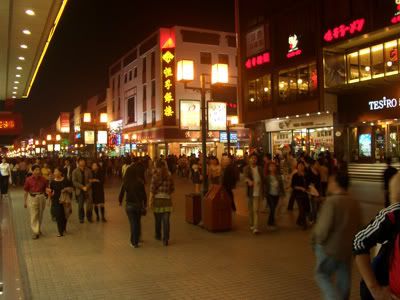Huqiu Shan (虎丘山)
Here is the official entrance to Huqiu Shan. The cab dropped me off somewhere to the front the last time so I kind of miss this entrance.
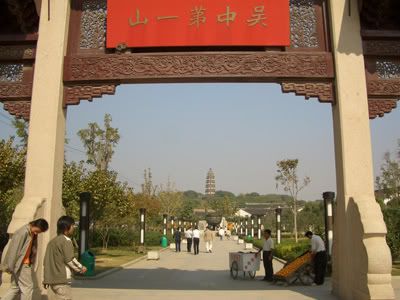
A photo shot of the leaning tower with me in it. This the shot which I have very much wanted to take while there. I have a similar shot of the Leaning Tower of Pisa, trying to hold on to the tower before it falls.
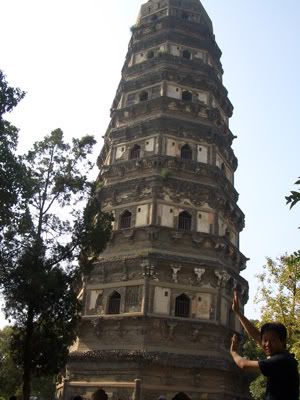
We left the train station at 10am but was unfortunately delayed at a mid-way stop between Wuxi and Suzhou for 30 minutes!!! Nevertheless, we are able to change our plan easily with us swapping the first and second sight for the third sight. Thus when we got to Huqiu Shan at 11.40am, it was almost time for lunch. There are many food tents that serve local food to the visitors. It is quite affordable and we are able to sample 3 varieties of the local specialities at 14RMB.
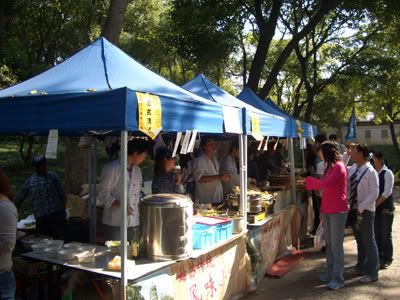
The main highlight of Huqiu Shan is actually the daily performance at 1pm. By the time we had finished our lunch, the timing is perfect and we are able to catch the 40 minutes show.
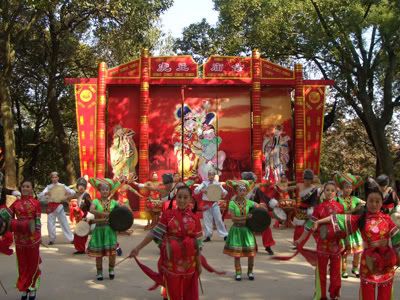
Silk Museum (丝绸博物馆)
Our second stop is to the Silk Museum. In it contains a chronological history of sericulture in China and how it originated 5,000 years ago from a concubine of Shi Huang Di. The many tools and archaeological findings are showcase in the museum. Suzhou is consider to be one of the foremost and main production of China's silk. There are two other centres of massive silk production back in those days: Hangzhou and Chengdu. History of the silk road and the sea trade are also drawn in vivid details.
But what really impress me the most are the live silk worms on display in the museum. It shows the worms in its papae stage on a large pile of leaves. It is their standard diet. The worms are not that noticeable from afar and visitors can just easily miss this section as the worms are pretty 'slow moving'.
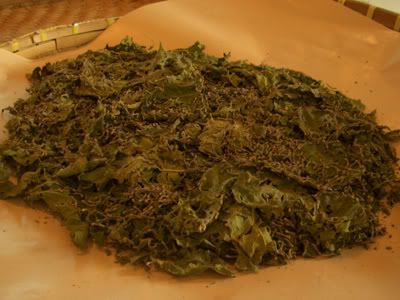
We have another area next to it where the worms have grown into large 'caterpillars'.
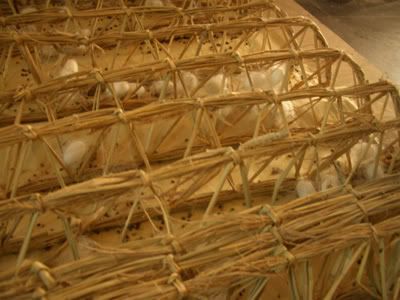
I managed to get a quick shot of the metamorphasis of the silk worm to share with all. This is the most fascinating part of the whole museum!
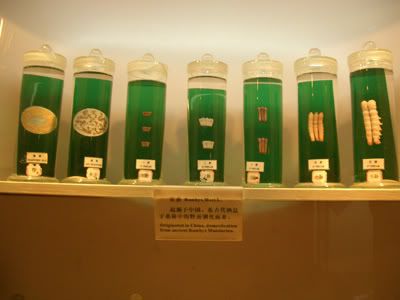
Bei Si Ta (北寺塔)
A 3 minutes walk across the silk museum is Bei Si Ta. It is the tallest Pagoda south of the Chang Jiang river. From the train station, this is also the most prominent sight from afar.
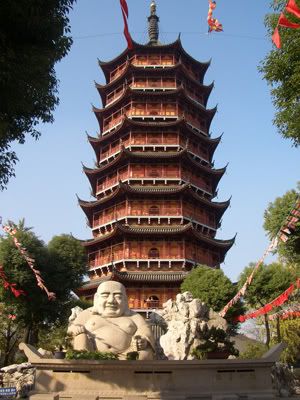
The pagoda is 9 storeys high and we climbed all the way up. It has become almost standard procedure that for every pagoda that is opened to us, we will climb all the way to the top. Hopefully there will not be an impossibly high pagoda for us to scale. From the top, it gives a remarkable view of Suzhou city and its environs.
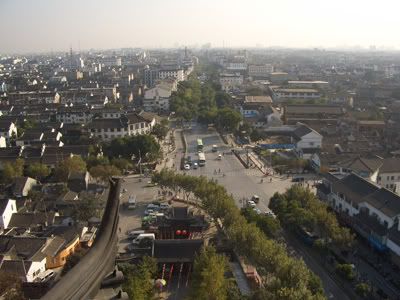
Behind the pagoda is the main temple hall and it is famous for its 7 Buddha statues. I stopped by there for a few minutes, listening to the story presented by a guide, before moving on.
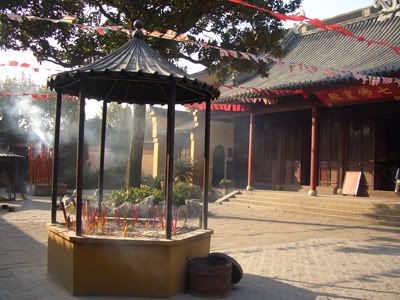
Zhou Zheng Yuan (拙政园)
The fourth stop is to visit the largest and most famous garden of Suzhou, the Zhou Zheng Yuan. Entrance ticket comes at 50RMB. This garden is really impressive. There are lakes against a vast backdrop of pavilions, trees, flowers and rock formations.
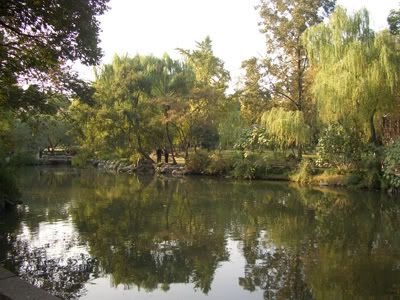
I am quite captivated by this beautiful garden design just a minute walk from the entrance. This should be a new addition to the garden but the flowers are simply dazzling.
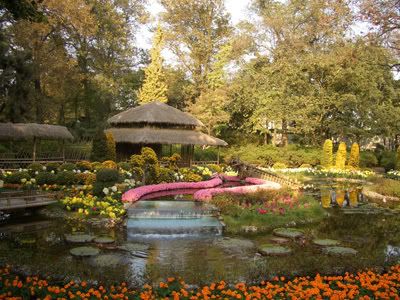
This is the most wanted photo sight in the whole of the garden. A lake in the middle with the pagoda looming in the background, to the side of the lake are pavilions and garden trees.

There is a bonsai area at the end of the garden.
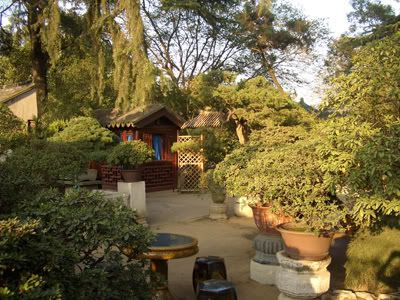
And a super big vase...
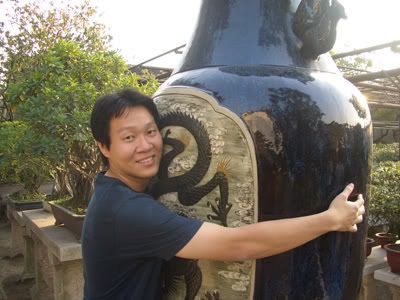
All the trees are marked with their name, their age. There is this hollow tree where visitors can just climb in.
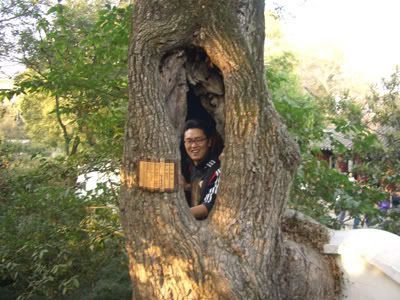
Shizi Lin (狮子林)
The only thing famous about Shizi Lin is the rock bonsai which is said to resemble the lion. There is a Buddhist history behind it. The picture below show the rock bonsai. Can you identify 9 lions in there?
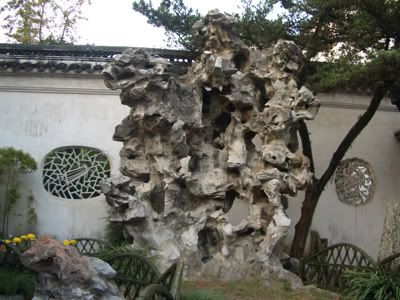
This is a standard ground design for many of the Suzhou houses. The guide mention that this is actually a representation for the word 'Fu' (福).
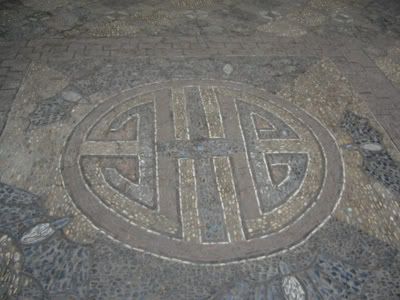
The Shizi Lin is a garden renown for its many rock bonsai and its pavilions.
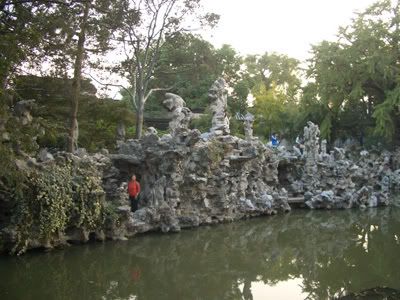
Shopping at Guan qian Jie (观前街)
The last stop for the day is shopping at Suzhou's Guan qian jie. My friend wanted to get some sports gear, so here we go.
While window shopping, I came upon this interesting restaurant that serves Xinjiang crusine. I have always wanted to try Xinjiang cursine but so far is unable to find one that serves purely Xinjiang food. Upon seeing it, I just grab the chance and went for it. We ordered the main Xinjiang plate, barbeque sticks and Mutton soup, the standard diet of the 'Xinjiangers'. Well, it was great!! Somehow, their crusine reminds me of the food back at home.

Here is a night scene shot of Guanqian Jie at night
